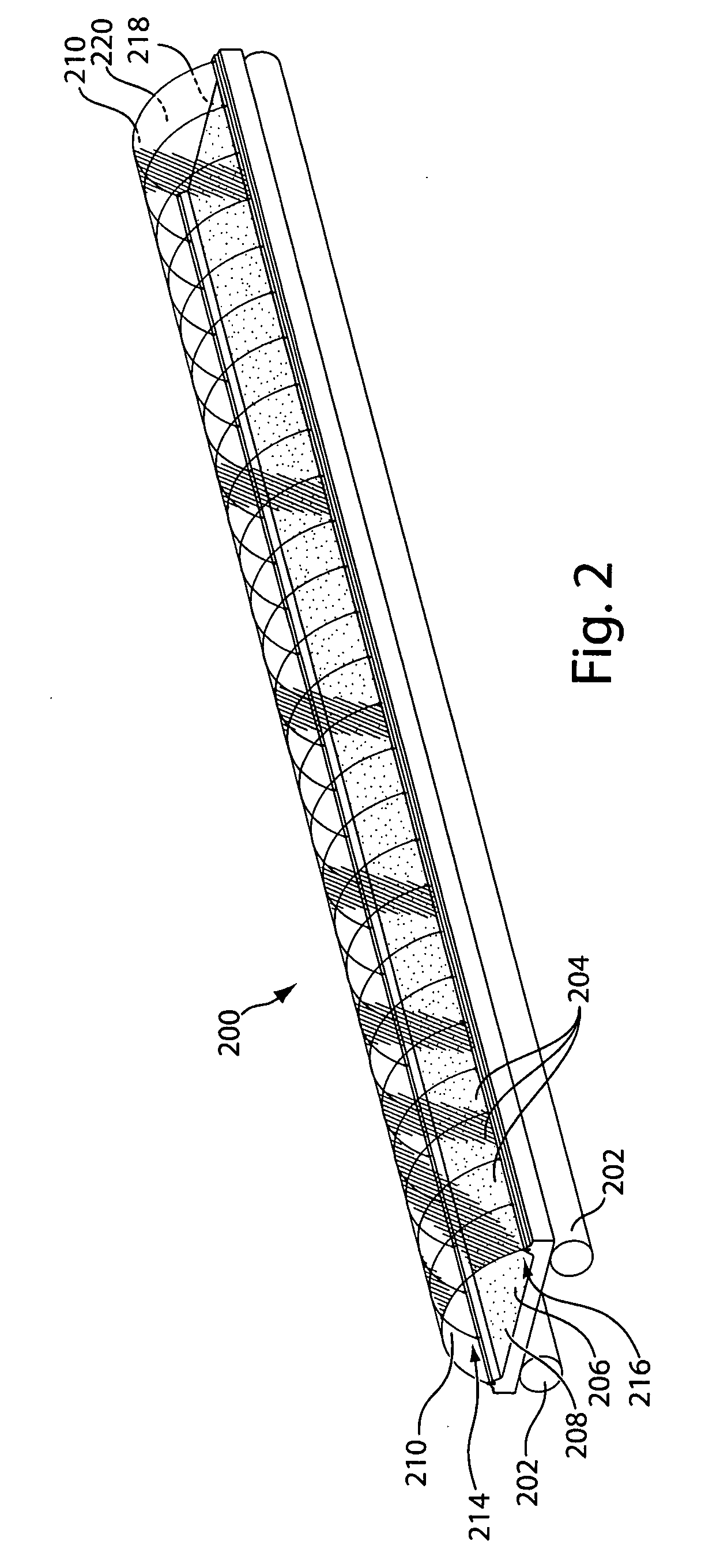Integrated photobioreactor-based pollution mitigation and oil extraction processes and systems
a photobioreactor and integrated technology, applied in the direction of biological water/sewage treatment, biological sludge treatment, separation processes, etc., can solve the problems of large cutting stock quantity, large and high cosub>2 /sub>emissions in the oil sands industry
- Summary
- Abstract
- Description
- Claims
- Application Information
AI Technical Summary
Problems solved by technology
Method used
Image
Examples
example 1
[0097]In this prophetic example, the trench photobioreactor of FIG. 2 or a plurality of such units interconnected in parallel is integrated with an oil sands facility according to the process described in FIG. 1. The CO2-containing byproduct gas stream(s) emitted from a power plant and / or oil sands facility is routed to the photobioreactor to produce biomass product, which is then used to produce liquid fuel for generating electrical power and steam from a natural-gas combined-cycle power plant. The photobioreactor is deployed as a floating structure on the holding pond adjacent to the oil sands facility. The photobioreactor uses the algae species Nannochloris sp., which is grown in Media 1. Media 1 has the composition listed in Table 1.
TABLE 1Algal Media 1, additives dispersed in Sea WaterComponentConcentration (g / l)NaNO30.075NaH2PO4*2H2O0.00565
[0098]The predicted growth rates for the algae as a function of time, concentration, and light intensity, measured as photon flux, are deri...
PUM
| Property | Measurement | Unit |
|---|---|---|
| wavelength | aaaaa | aaaaa |
| heat | aaaaa | aaaaa |
| power | aaaaa | aaaaa |
Abstract
Description
Claims
Application Information
 Login to View More
Login to View More - R&D
- Intellectual Property
- Life Sciences
- Materials
- Tech Scout
- Unparalleled Data Quality
- Higher Quality Content
- 60% Fewer Hallucinations
Browse by: Latest US Patents, China's latest patents, Technical Efficacy Thesaurus, Application Domain, Technology Topic, Popular Technical Reports.
© 2025 PatSnap. All rights reserved.Legal|Privacy policy|Modern Slavery Act Transparency Statement|Sitemap|About US| Contact US: help@patsnap.com



